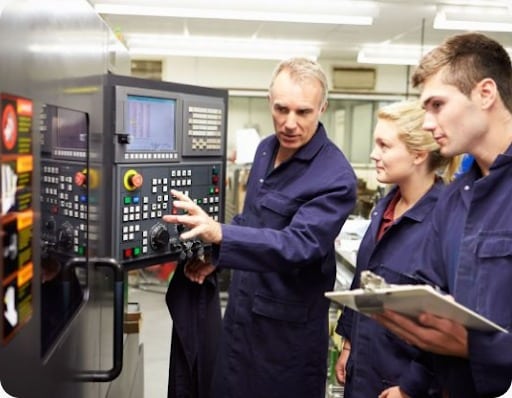Manufacturing facilities face numerous challenges daily, from meeting production quotas to maintaining the integrity of their equipment. Yet nothing should take priority over the safety of workers who operate the machinery that keeps production moving. Workplace accidents involving machinery can result in causing serious injuries, fatalities, regulatory penalties, and significant downtime.
Machine safety services offer comprehensive solutions to identify, assess, and mitigate risks in industrial environments. These specialized services help facilities maintain compliance with safety standards while protecting their most valuable assets—their employees. The right approach to machine safety doesn’t just prevent accidents; it often leads to improved productivity and operational efficiency.
Understanding Risk Assessment
Risk assessment forms the foundation of effective machine safety protocols. It involves a systematic evaluation of machines and processes to identify potential hazards that could cause injury or harm. This isn’t just about checking boxes—it’s about truly understanding how workers interact with machinery daily.
A thorough risk assessment examines both obvious and hidden dangers. Sometimes the most significant risks come from routine operations that workers perform hundreds of times without incident until that one unfortunate moment. These assessments consider factors like machine design, installation, operation procedures, and maintenance requirements.
The goal isn’t to overwhelm you with problems but to create a practical roadmap for addressing risks based on severity and likelihood. This prioritization helps facilities allocate resources effectively and tackle the most critical safety issues first, making the process manageable even with limited budgets.
Detailed Machine Safety Assessments
Safety assessments go beyond basic risk identification to provide detailed analysis of each machine’s compliance with current safety standards. These evaluations typically include physical inspection of guarding systems, emergency stops, and control reliability.
Modern assessments also examine less visible elements like safety circuits, control system architecture, and the integration of safety components. Many facilities are surprised to discover that machines they considered safe actually have significant compliance gaps when measured against current standards.
The outcome is a comprehensive report documenting findings and providing clear, actionable recommendations. Good assessments strike the balance between technical detail and practical guidance, giving maintenance teams and management specific steps to improve safety conditions.
Risk Reduction Strategies
After identifying risks, the next crucial step is implementing effective reduction strategies. This typically follows a hierarchy of controls that prioritizes elimination of hazards whenever possible, followed by engineering controls, administrative measures, and finally, personal protective equipment.
Engineering controls might include installing fixed guards, interlocked access points, light curtains, or safety mats. The best solutions protect workers without significantly hindering productivity. In fact, well-designed safety improvements often streamline workflows and reduce downtime.
Administrative controls supplement physical safeguards through procedures, training, and warning systems. These measures ensure workers understand how to interact safely with machinery and recognize when something isn’t right. The most effective programs combine multiple approaches to create layers of protection.
Implementation of Safety Solutions
Turning recommendations into reality requires careful implementation. This process includes selecting appropriate safety devices, modifying existing equipment, and sometimes redesigning workflows. The goal is seamless integration of safety features without disrupting production.
Implementation often happens in phases, starting with critical high-risk areas and progressing through medium and lower-risk concerns. This approach allows facilities to manage budgets while making steady progress toward comprehensive safety improvements.
The installation of safety equipment must be performed by qualified technicians who understand both the safety standards and the operational requirements of the machinery. Proper implementation ensures that safety systems function as intended without causing false trips or operational inefficiencies.
Safety Control Systems
Modern machinery relies heavily on control systems to function safely. These systems monitor operating conditions and can shut down equipment when dangerous situations arise. The complexity ranges from simple emergency stops to sophisticated safety PLCs that control multiple safety functions simultaneously.
Safety control systems must meet reliability standards appropriate for the level of risk involved. Higher risk applications require more robust systems with redundancy and self-monitoring capabilities. These systems are categorized by performance levels that match the degree of risk reduction needed.
Many older machines can be retrofitted with newer safety control technology, bringing them up to current standards without complete replacement. This often provides a cost-effective alternative while significantly improving safety performance and reliability.
Regulatory Compliance
Navigating the complex landscape of safety regulations and standards can be overwhelming. Requirements vary by industry, machine type, and location, creating a patchwork of obligations that facilities must understand and meet.
OSHA regulations provide the baseline requirements in the United States, but industry standards like those from ANSI, NFPA, and ISO often establish more specific guidance for particular machine types. Staying current with these evolving standards requires ongoing attention.
Non-compliance carries significant consequences, including potential fines, increased insurance premiums, and legal liability. Beyond these direct costs, safety violations can damage reputation and workplace morale. The right safety services help navigate these requirements proactively rather than reactively.
Documentation and Training
Even the best safety systems fail without proper documentation and training. Workers need to understand not just what safety features exist, but why they matter and how they function. This knowledge builds a culture where safety becomes everyone’s responsibility.
Comprehensive documentation includes risk assessments, solution designs, validation testing, and maintenance requirements. These records prove invaluable during regulatory inspections and following any incidents. They also provide the foundation for training programs and future safety improvements.
Effective training programs address both the technical aspects of machine safety and the human factors that contribute to accidents. This includes recognizing warning signs, understanding safeguarding devices, and knowing when to report concerns before they become incidents.
Ongoing Support and Maintenance
Machine safety isn’t a one-time project but an ongoing commitment. Safety systems require regular inspection, testing, and maintenance to ensure continued effectiveness. Components wear out, modifications occur, and new risks emerge as production requirements change.
Support services help facilities maintain their safety systems through scheduled inspections, functionality testing, and preventive maintenance. These services often include updating documentation and refresher training to keep safety knowledge current.
The most valuable support relationships include access to safety experts who can answer questions, troubleshoot problems, and provide guidance as needs evolve. This ongoing partnership helps facilities maintain their safety momentum rather than experiencing decline after initial improvements.
Return on Investment
While safety improvements require investment, they typically deliver substantial returns through reduced incidents, lower insurance costs, and improved productivity. The financial impact of a serious accident far exceeds the cost of prevention.
Beyond direct savings, effective safety programs often reveal inefficiencies in production processes that, when addressed, improve overall equipment effectiveness. Workers who feel protected tend to experience higher morale and demonstrate greater productivity.
Perhaps most importantly, investments in machine safety protect a facility’s most important assets—its people. The human cost of preventable accidents extends far beyond financial calculations to impact families and communities. This human factor represents the true value of comprehensive machine safety services.
Conclusion
Machine safety services provide essential support for facilities seeking to protect workers, comply with regulations, and optimize operations. From initial risk assessment through implementation, training, and ongoing maintenance, these services offer a structured path to safer, more productive environments. The most effective safety programs integrate seamlessly into operations, enhancing rather than hindering production while creating workplaces where employees can perform their duties without unnecessary risk. By partnering with qualified safety experts, facilities can navigate complex requirements and implement solutions that deliver lasting value through improved protection, compliance, and performance.







